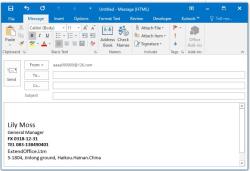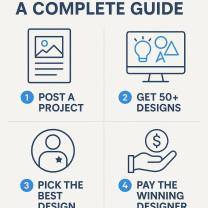What is meant by RSS feed?
RSS stands for "Really Simple Syndication" or "Rich Site Summary." An RSS feed is a standardized format used to deliver regularly updated content from websites, blogs, news sources, and other online publications. The primary purpose of an RSS feed is to provide a convenient way for users to stay informed about the latest updates from their favorite websites without having to visit each site individually.
Here's a brief explanation of what RSS feeds are and their purpose:
Format for Syndication: RSS feeds are typically in XML format. They contain structured information about the content on a website, such as article titles, summaries, publication dates, and links. This structured format makes it easy for computers and applications to understand and process the content.
Content Updates: Websites that offer RSS feeds regularly update their content, such as news articles, blog posts, podcasts, or other types of information. By subscribing to an RSS feed, users can receive these updates as soon as they are published, usually in real-time or at regular intervals.
Aggregation: Users can use RSS feed readers or aggregator applications to collect and organize content from various sources in one place. This allows them to keep track of multiple websites and receive updates from different sources in a single interface.
Customization: RSS feeds are user-controlled. Subscribers choose the feeds they want to follow, and they can organize, filter, or categorize the content to suit their preferences. This customization enables users to create a personalized news or content stream.
Efficient Information Consumption: RSS feeds help users save time and effort by avoiding the need to visit multiple websites regularly. Instead, they receive updates in one location, making it easier to skim through headlines and access full articles or content of interest.
Privacy and Control: RSS feed subscriptions do not require users to share their personal information, such as email addresses, with the content providers. This can enhance privacy and reduce the risk of spam.
Widespread Use: RSS feeds have been widely used in the past for content syndication, but social media and other platforms have also become popular for content distribution. However, RSS feeds remain a valuable tool for users who prefer direct control over their content consumption.
To use an RSS feed, you typically need an RSS feed reader or aggregator, which can be a standalone application, a web-based service, or a built-in feature in some web browsers and email clients. By adding the URL of an RSS feed to your reader, you can start receiving updates from your chosen sources in a well-organized manner.
Demystifying RSS Feeds: Understanding the Basics
RSS stands for Really Simple Syndication. It is a web feed format that allows users to subscribe to and receive updates from their favorite websites and blogs. RSS feeds are typically written in XML, a lightweight markup language that is easy for computers to read.
What Is Meant by an RSS Feed?
An RSS feed is a file that contains a list of recent articles or blog posts from a website. The feed is typically updated each time the website publishes new content. Users can subscribe to RSS feeds using a variety of tools, such as RSS readers, web browsers, and email clients.
Components and Structure of an RSS Feed
An RSS feed is typically composed of the following components:
- Channel: The channel element contains information about the RSS feed, such as its title, description, and link to the website.
- Items: The item element contains information about each article or blog post in the feed, such as its title, description, link to the full article, and publication date.
The Role of RSS Feeds in Content Distribution
RSS feeds play an important role in content distribution by allowing users to receive updates from their favorite websites and blogs in a single place. This eliminates the need to visit each website individually to check for new content.
Benefits and Uses of RSS Feeds in the Digital Age
RSS feeds offer a number of benefits for both users and content creators. For users, RSS feeds provide a convenient way to stay up-to-date on the latest news and information from their favorite sources. For content creators, RSS feeds can help to increase traffic to their websites and blogs.
Here are some of the specific benefits and uses of RSS feeds in the digital age:
- Convenience: RSS feeds allow users to stay up-to-date on the latest news and information from their favorite sources in a single place. This eliminates the need to visit each website individually to check for new content.
- Personalization: Users can subscribe to RSS feeds from a variety of sources, including news websites, blogs, and social media accounts. This allows users to create a personalized newsfeed that is tailored to their interests.
- Efficiency: RSS feeds can help users to save time and be more efficient. Instead of visiting each website individually to check for new content, users can simply check their RSS feed reader to see what is new.
- Discovery: RSS feeds can help users to discover new websites and blogs that they might be interested in. By subscribing to RSS feeds from a variety of sources, users can be exposed to new content that they might not have otherwise found.
- Promotion: Content creators can use RSS feeds to promote their content and increase traffic to their websites and blogs. By publishing an RSS feed, content creators make it easy for users to subscribe to their content and receive updates whenever new content is published.
Overall, RSS feeds are a valuable tool for both users and content creators in the digital age. They offer a convenient and efficient way to stay up-to-date on the latest news and information, and to discover new content.













